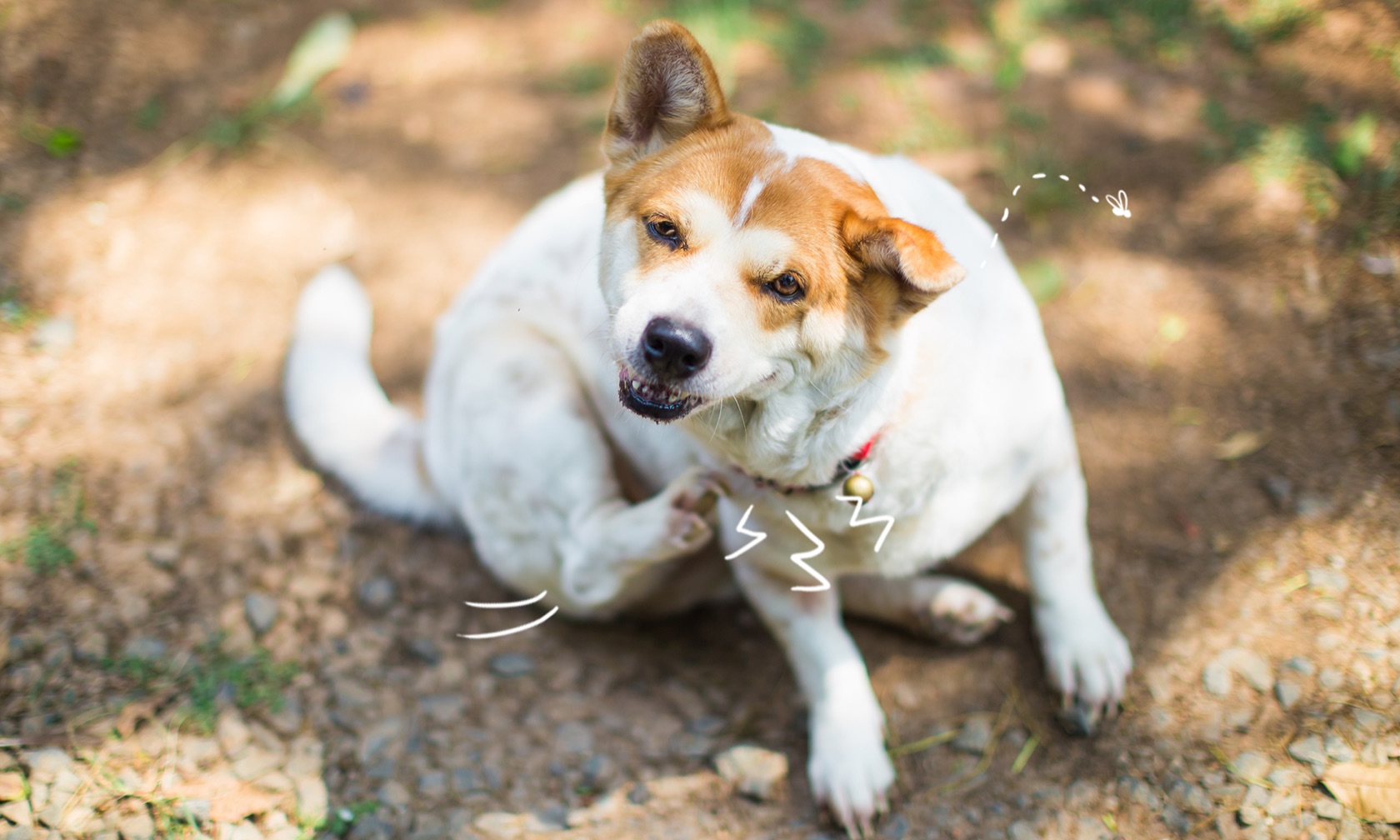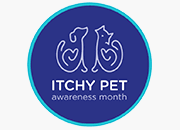If your dog has a persistent itch that makes them scratch or chew themselves, a visit to your veterinarian will help narrow down the cause and get your dog started on a treatment plan to relief their itch. Sometimes your vet will prescribe multiple medications together to both ease your dog’s itchiness and address the root cause of your dog’s skin condition. But what if you’re still seeing your dog itching after they’ve started an anti-itch medication? Or you notice that they’re itching again when their medication had been previously working well?

There are a few reasons that could be why your dog is itching — different “flare factors” can increase your dog’s itching despite being on previously-effective medication. A flare factor is a condition that causes dramatic worsening of itching or skin inflammation that was previously under control. These factors include fleas or mites, Staph (bacteria) or yeast (fungal) infections, and food allergies. If you’re noticing an increase in your dog’s scratching, they may have developed one or more of these flare factors that are pushing them over their “itch threshold” despite being on anti-itch medication.
Fleas
Flea control is crucial to controlling flares of allergic itch. Intermittent exposure to fleas, such as when a pet owner only uses flea preventative when they see fleas or for a few months during the summer, increases the risk of developing flea allergy[1]. Aggressively treating the fleas in these dogs makes controlling their chronic itch much easier, by keeping them below their allergic itch threshold.
Staph or Yeast Infections
Dogs with environmental allergies (or atopic dermatitis) have increased Staph and yeast on their skin compared to normal dogs, due to a breakdown in their protective skin barrier, and this can lead to skin and ear infections. Your veterinarian can prescribe oral, injectable and topical medications to treat these conditions.

Food Allergies
The most common food allergens are animal proteins, but grain-free diets are not likely to be helpful. The best way to determine what food allergies your dog might have is an eight-week elimination diet followed by food challenge trials. Mislabeling of over-the-counter dog food is common, even with hypoallergenic ingredients, so a prescription or veterinarian-supervised home-cooked diet is often best.
Seasonal Allergies
Seasonal spikes in pollen levels can also cause a flare.
The reason for the flare-up in your dog’s scratching needs to be addressed – whether it’s getting back on track with a flea preventative, a prescription treatment for a bacterial or fungal skin infection, or a vet-monitored food trial to determine any food allergies that your dog might have developed. Your dog’s immune system can only handle so much, and a combination of these factors can push your dog over their “itch limit” and can make them uncomfortable.
Proactive Treatment for Dogs with Environmental Allergies
Dogs with environmental allergies can benefit greatly from the following proactive treatments and management[2,3]:
- Control their itch and inflammation with effective and safe prescription medication.
- Work with your veterinarian to find the underlying cause of your dog’s itch.
- Make sure your dog is on year-round flea control — your veterinarian can recommend the best option for your dog. An oral treatment versus a topical solution may be best because you’ll likely be bathing your dog regularly.
- Bathe your dog weekly with a medicated or hypoallergenic shampoo and use anti-itch sprays and/or mousse as recommended by your vet. This will help prevent Staph and yeast infections, which are major flare factors as they weaken your dog’s natural skin barrier and make them more susceptible to allergens.
- Keep your dog on a high-quality dog food, preferably with a high fatty acid content that will support their skin barrier.
- Consider asking your vet about allergen immunotherapy — either injections under the skin or allergy drops given orally to normalize your dog’s immune response to allergens.
- Work closely with and stay in touch with your vet (or even a board-certified veterinary dermatologist) to keep flares and other skin problems to a minimum.
By taking some steps to prevent flare factors, your dog’s regular anti-itch medication should work more effectively, and your dog will be more comfortable.
ZPC-00316R2
- Wilkerson MJ et al. The immunopathogenesis of flea allergy dermatitis in dogs. Vet Immunol Immunopathol 2004; 99:179-19
- Olivry T, et al. Treatment of canine atopic dermatitis: 2010 clinical practice guidelines from the International Task Force on Canine Atopic Dermatitis. Vet Dermatol. 2010;21:233-248.
- Olivry T et al. Treatment of canine atopic dermatitis: 2015 updated guidelines from the International Committee on Allergic Diseases of Animals (ICADA). BMC Veterinary Research 2015; 11:210.





